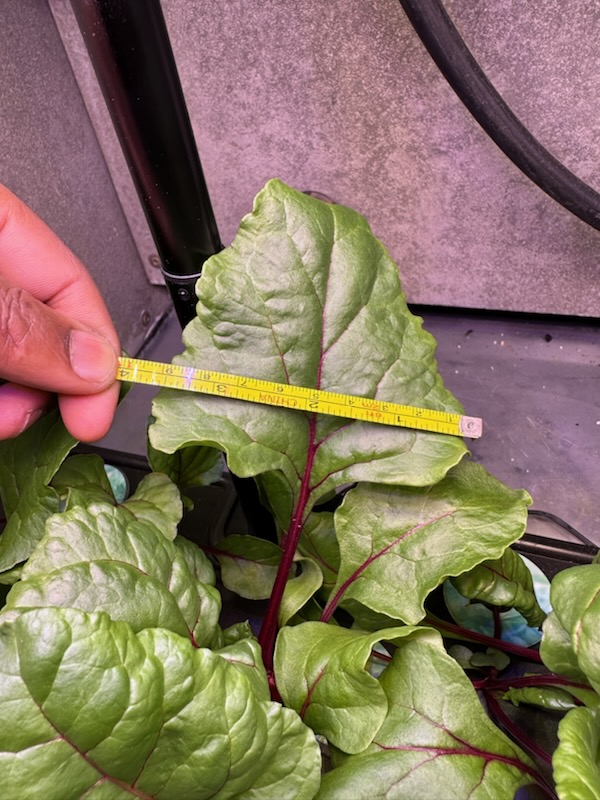Researchers found a way to recycle urine and use it as fertilizer
A discovery by U.S. scientists could help astronauts grow fresh produce while floating among the stars.
A team of researchers led by Dr. Joan Lynam at Louisiana Tech University found a way to recycle urine, separating the water from the waste byproducts.
First, though, Dr. Lynam’s team had to create a synthetic urine that is comparable to what humans produce.
Human urine can contain over 3,000 components, so the researchers had to narrow down the synthetic ingredients.
“We used 13 different components,” she told Farms.com. “The biggest one is probably urea, which we know is already a fertilizer and where the name urine comes from. “We thought if we can concentrate this urine, it could be something that can be used in hydroponic applications.”
A process called direct contact membrane distillation (DCMD) is used to concentrate the synthetic urine.
DCMD is when “a porous membrane comes in direct contact with cold, pure water, thereby causing vapor to condense in the water,” ScienceDirect.com’s definition says.
Dr. Lynam’s team started with the synthetic urine on the bottom.
“The urine solution is heated to about 50 or 60 degrees C (122 or 140 F), then you have a hydrophobic (property of molecules that don’t mix with water) membrane on top of that,” Dr. Lynam said. “The membrane doesn’t let big molecules like urea through, but the water vapor is small enough to get through to the top. The water vapor condenses in the cold water, and then you end up with a concentrated urine solution.”
The separated water should be potable but that hasn’t been proven yet, Dr. Lynam said.
The whole unit that does the separation can likely fit in an airplane bathroom, she added.
In the lab, the researchers used sugar beets to explore the efficacy of this process.
And they replaced 10 percent of the standard hydroponic solution with the concentrated urine after germination.

“The results concerning the plant height of sugar beets at the fourth week after sowing revealed that synthetic urine replacement remained superior by recording 30% taller plants than the control treatment,” a published research document Dr. Lynam shared with Farms.com says. “Likewise, the control treatment produced 3% shorter sugar beet plants in comparison to the 10% synthetic urine treatment at six weeks, but both treatments performed statistically at par with each other at the eighth week of the trial.”
The control outperformed the synthetic urine in terms of leaf width and plant weight.
When it comes to plant weight, the control may have done better because of one of the components of the synthetic urine.
“We think it’s because urine has sodium chloride in it, which is not necessarily a good nutrient for growing hydroponic plants,” Dr. Lynam said. “So right now we’re starting a study to find out what chemicals we can use to neutralize the effect of the sodium chloride.”
Sodium chloride has multiple uses in agriculture, including as an herbicide, desiccant and defoliant.
Dr. Lynam’s team will be experimenting with other leafy greens, starting with spinach, to see how those crops perform with the synthetic urine.
And while this NASA-funded research focuses on food in space, there could be applications on Earth too.
Theoretically, anywhere that has urinals can recycle the urine, Dr. Lynam said.
“Why not take that urine that’s flushed down with water and use it as fertilizer?” she said. “In cities especially where they may not have the space to grow fresh crops I think that could be very interesting.”
Dr. Lynam and her team aren’t the only ones to study food production in space.
At the end of 2020, Kate Rubins, a NASA astronaut, harvested 21 mature radish plants from the Advanced Plant Habitat, located aboard the International Space Station.
On Jan. 1, 2021, Rubins and other astronauts ate those radishes to celebrate the new year.
The vegetables “were just as tasty as what she’s grow in her garden,” Karl Hasenstein, a researcher, told UPI at the time.
And in June 2021, a researcher from the University of Guelph sent barley seeds from the Glenlivet distillery in Scotland, to space.
The seeds returned, and preliminary lab results showed the seeds can survive at -200 C (-328 F).